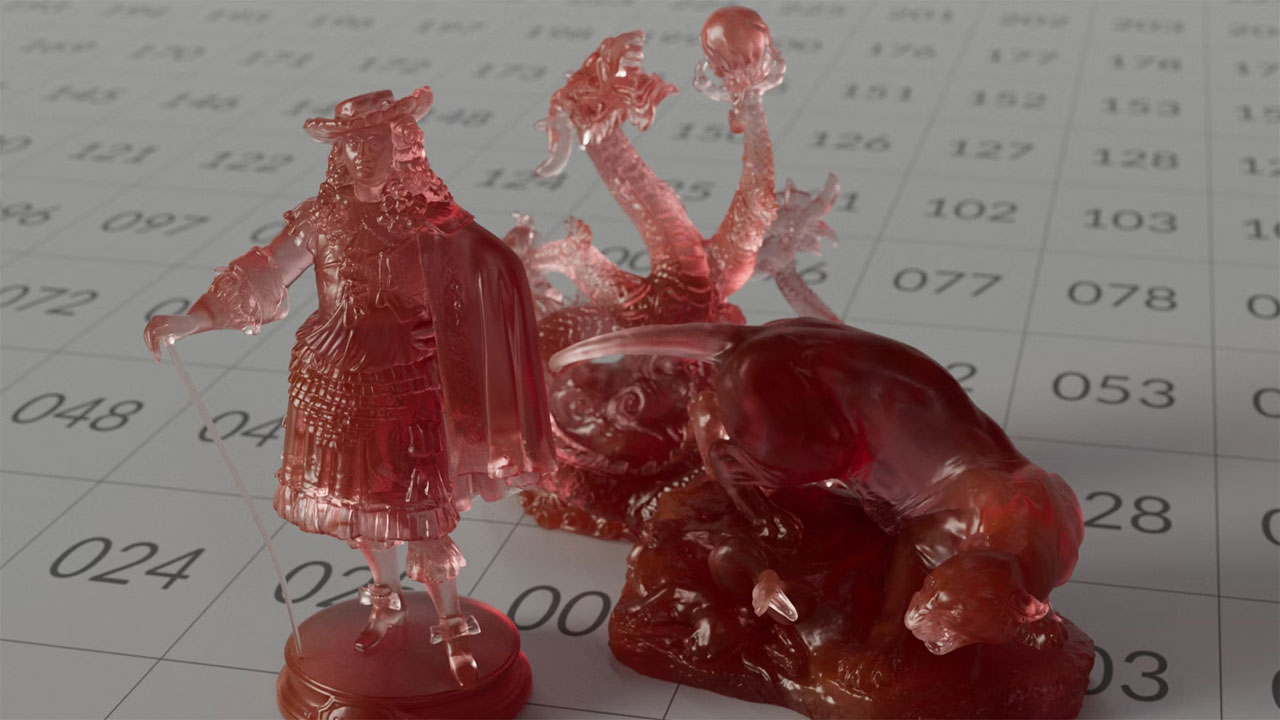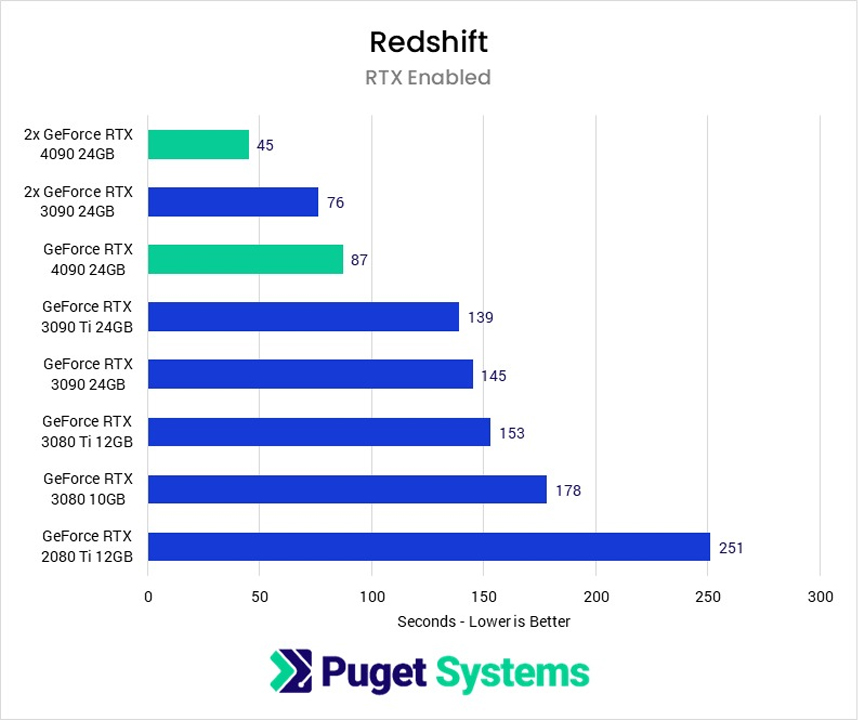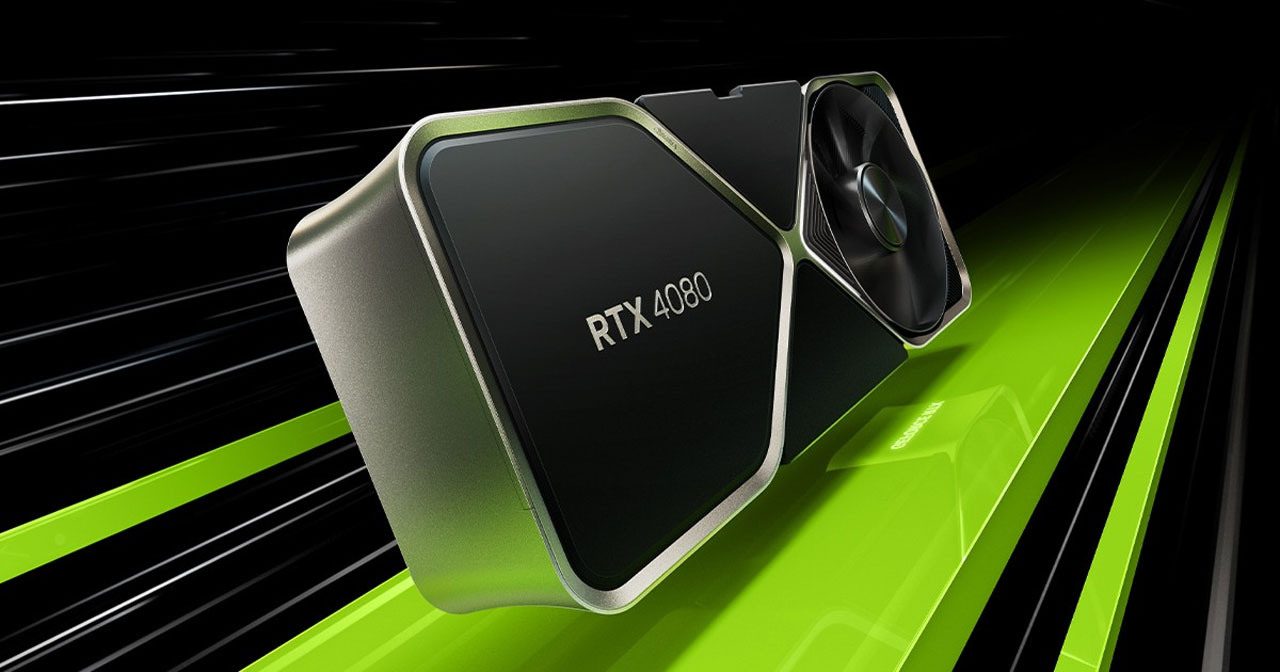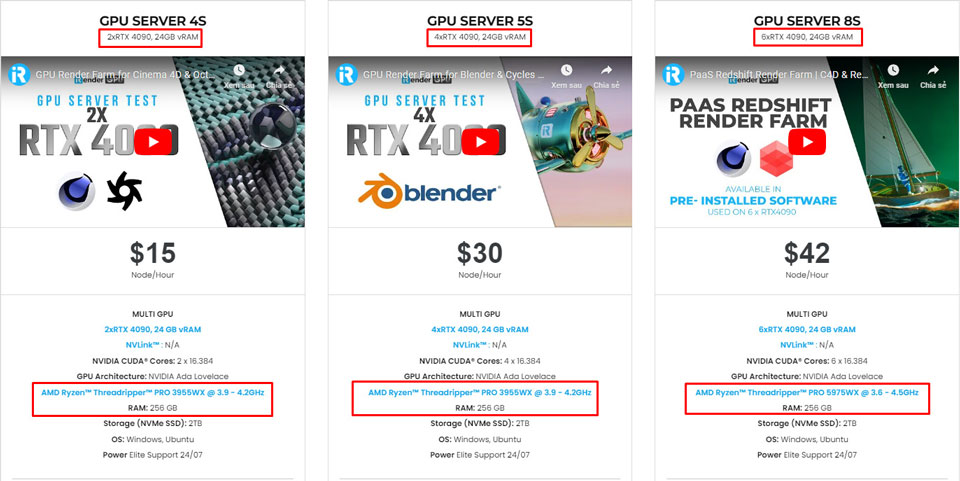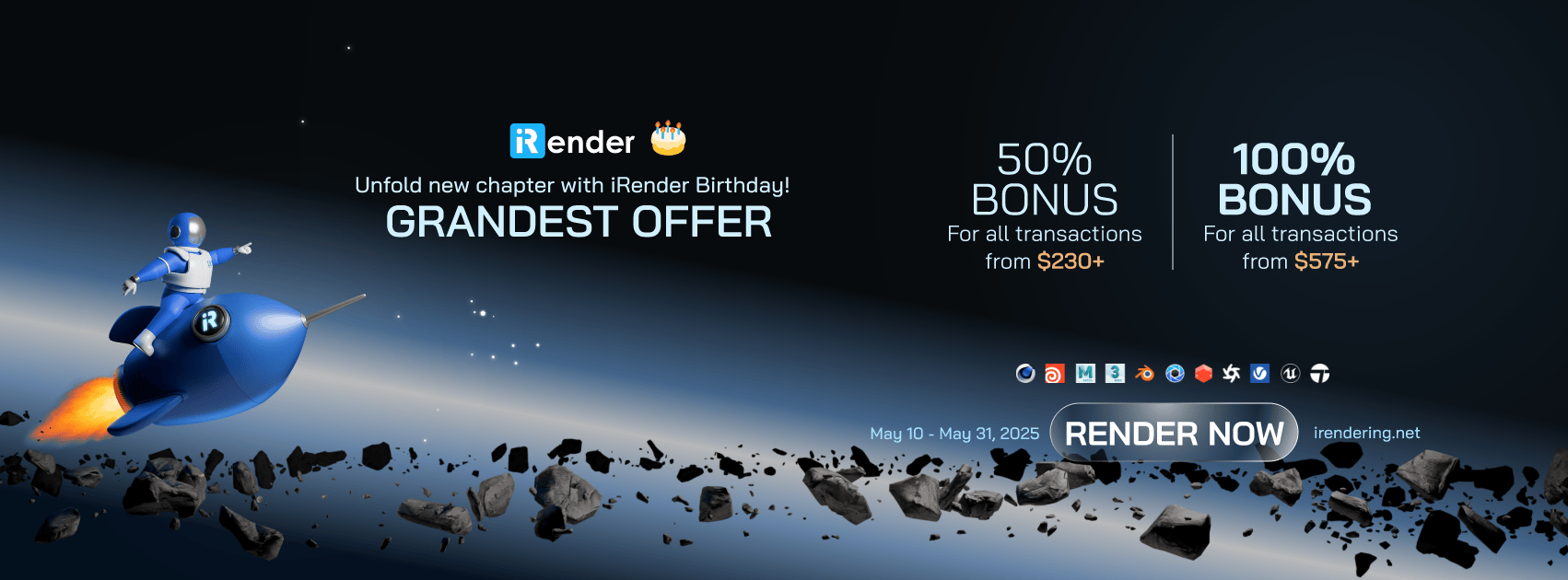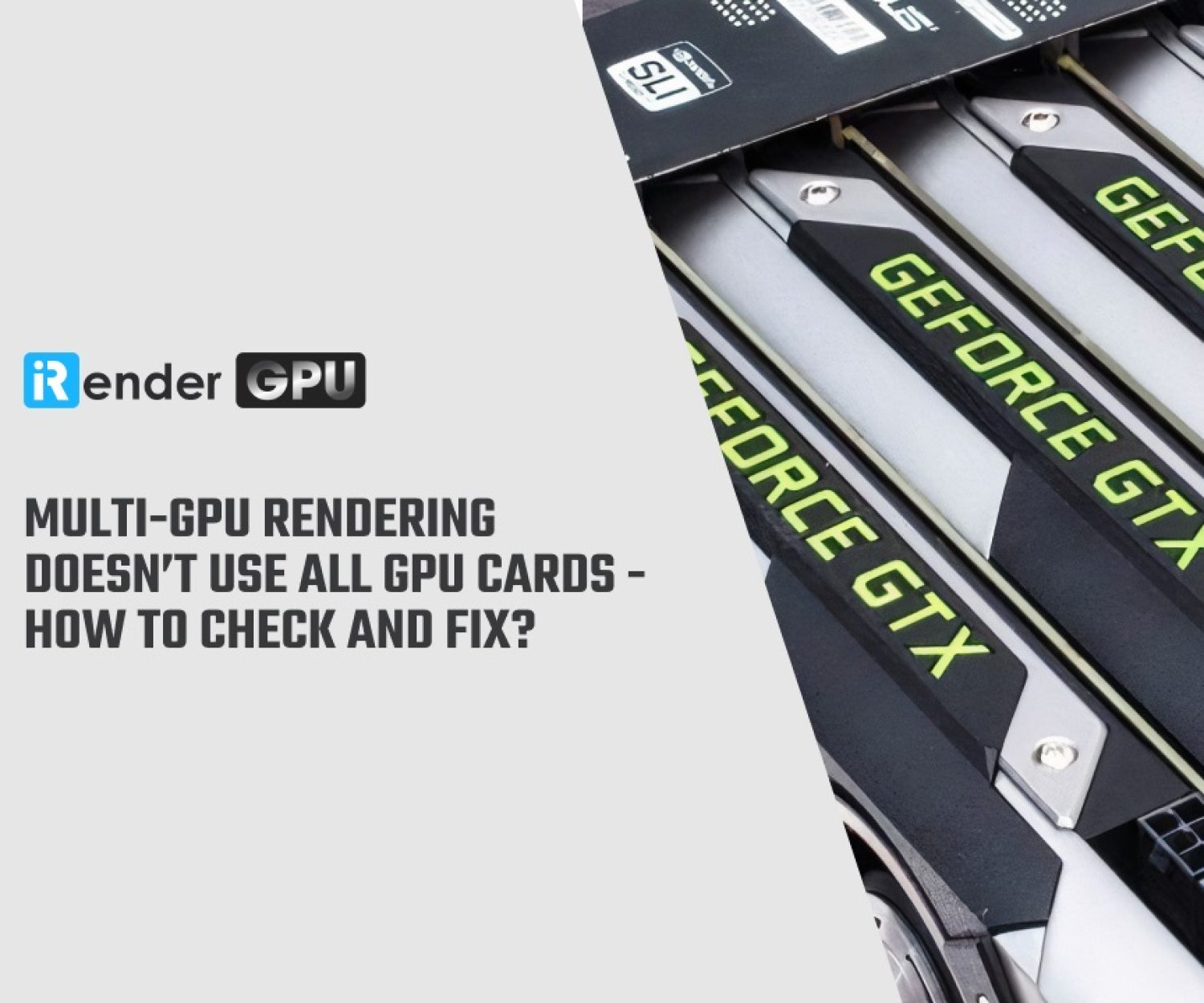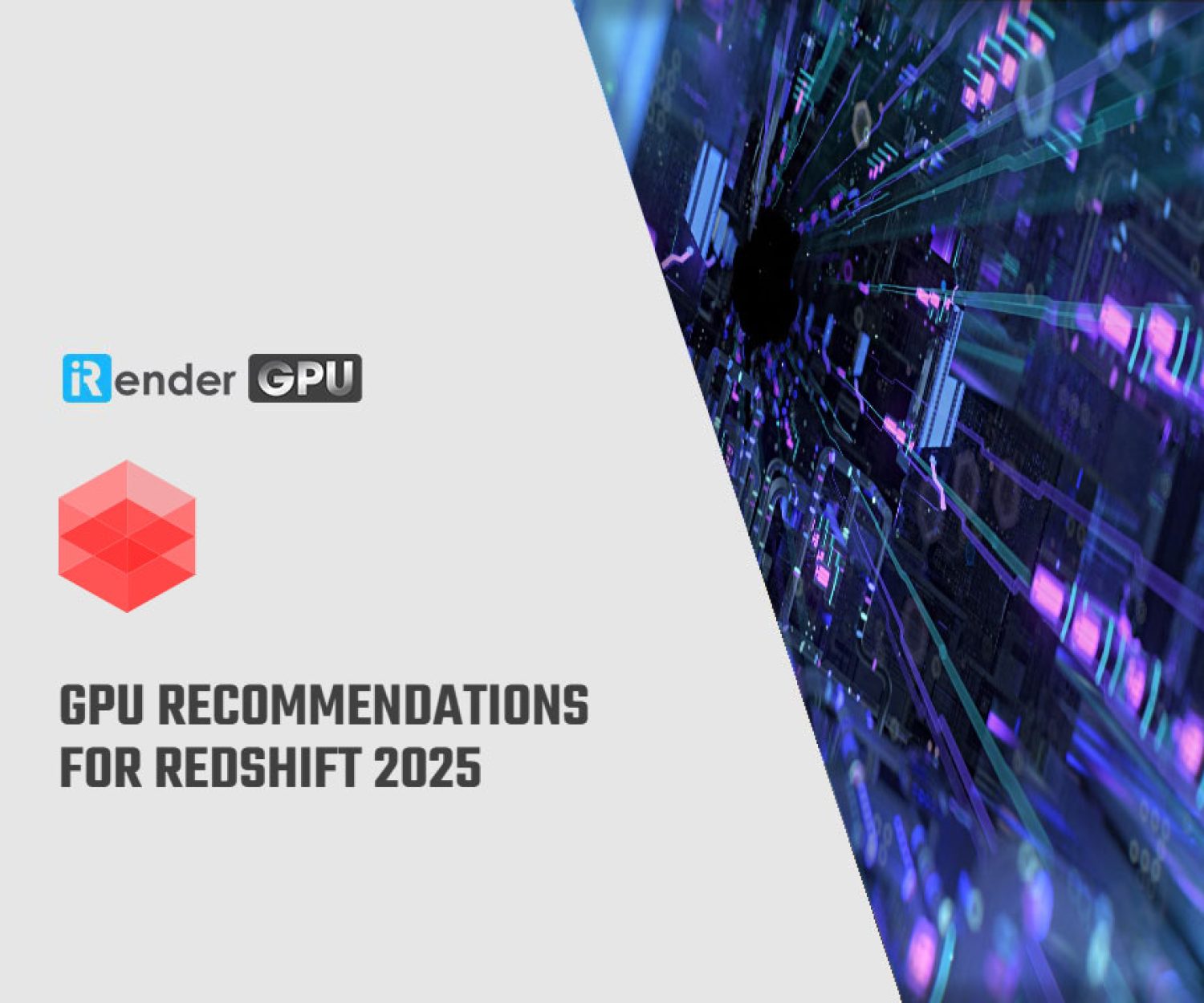GPU Recommendations for Redshift 2025
In 2025, investing in the right GPU for Redshift is vital for anyone serious about producing high-quality 3D renders. Artists and designers can maximize their productivity and creative output with options tailored to various budgets and requirements. The powerful capabilities of modern GPUs enable quick rendering times and allow for greater complexity in projects. In this blog, iRender will explore key GPU recommendations for Redshift in 2025, focusing on specifications, performance benchmarks, and the specific needs of different users.
Let’s get started!
Importance of GPU Selection in Redshift
Choosing the right GPU (Graphics Processing Unit) is crucial when working with Redshift, a leading GPU-accelerated rendering engine. The GPU plays a vital role in determining the efficiency, speed, and quality of rendered images. As rendering technology evolves, understanding the significance of GPU selection becomes increasingly important for artists, designers, and studios. This discussion highlights the key factors that underscore the importance of GPU selection in Redshift.
GPUs are specifically designed for parallel processing, which allows them to handle numerous calculations simultaneously. This is particularly beneficial in rendering because tasks such as calculating lighting, shadows, and texture application can be performed concurrently. A more powerful GPU with a greater number of CUDA cores can drastically reduce rendering times, enabling faster project turnaround.
The amount of VRAM (Video RAM) directly impacts your ability to work with complex scenes in redshift. High-resolution textures, intricate geometry, and numerous assets require a significant amount of memory. Selecting a GPU with sufficient VRAM ensures that artists can load complex scenes without performance degradation or crashing. Redshift recommends a minimum of 8GB, but 16GB or higher is preferable for detailed projects. Advanced GPUs offer better memory management capabilities, allowing for effective handling of large asset libraries, which is increasingly important in modern production environments.
Factors of choosing a GPU
When selecting a GPU (Graphics Processing Unit) for rendering tasks, particularly with software like Redshift, several key factors must be considered to ensure optimal performance and suitability for your specific needs.
Performance Specifications
- CUDA Cores: For CUDA-accelerated applications like Redshift, the number of CUDA cores is critical. More CUDA cores enable faster processing and rendering times as they allow for handling multiple tasks simultaneously.
- Clock Speed: The base and boost clock speeds affect the processing power of the GPU. Higher clock speeds can enhance performance, particularly in single-threaded tasks.
Memory (VRAM)
- Size of VRAM: The amount of Video RAM (VRAM) is essential for handling textures, geometry, and complex scenes. A minimum of 8GB is recommended for Redshift, with 16GB or more being ideal for detailed projects or high-resolution renders.
- Memory Bandwidth: This refers to the speed at which data can be read from or written to the VRAM.
Software Compatibility
- Software Support: Ensure the GPU is compatible with the software you intend to use, particularly checking support for CUDA (NVIDIA) since Redshift is optimized for NVIDIA GPUs.
- Drivers and Updates: Regular updates from the GPU manufacturer (like NVIDIA or AMD) are necessary for performance enhancements and bug fixes. Choose a brand known for reliable support.
Scalability
- Multi-GPU Support: If you plan to scale your rendering capabilities in the future, consider selecting a GPU that can work in multi-GPU configurations to enhance performance further.
- Upgrade Path: Assess how easy it is to upgrade components in your system. Ensure your motherboard has enough PCIe slots and bandwidth to accommodate multiple GPUs if necessary.
Projects Budget
Budget is a crucial factor when choosing a GPU for Redshift. The budget will determine which GPUs are financially feasible. High-performance GPUs can be quite expensive, and setting a maximum budget will help narrow down the options to those that provide the best value for your needs.
Recommended GPUs for Redshift in 2025
NVIDIA GeForce RTX 4090
The NVIDIA® GeForce RTX™ 4090 is a powerhouse of a GPU, boasting high CUDA core counts, ample VRAM, advanced ray-tracing capabilities, and cutting-edge AI features, making it ideal for gamers, content creators, and professionals using rendering engines like Redshift. Its impressive specifications and technologies ensure that users can achieve top performance in demanding applications, leading to unmatched visual fidelity and rendering speed.
| Feature | Description |
|---|---|
| CUDA Cores | 16,384 CUDA cores for exceptional parallel processing capabilities. |
| VRAM | 24 GB GDDR6X VRAM, which allows handling of large textures and complex scenes in 3D rendering without performance drops. |
| Ray Tracing | Advanced ray tracing capabilities for realistic lighting, shadows, and reflections using 2nd generation RT cores. |
| Tensor Cores | 4th generation Tensor Cores support AI-driven tasks, including Deep Learning Super Sampling (DLSS) for enhanced performance in games and apps. |
| Clock Speed | Base clock speed around 2.23 GHz and boost clock speed can reach up to ~2.52 GHz for high performance during demanding tasks. |
You can look at Redshift Performance Analysis following:
NVIDIA GeForce RTX 4080
The NVIDIA GeForce RTX 4080 is a high-performance graphics processing unit (GPU) from NVIDIA’s RTX 40 series, designed for gamers, content creators, and professionals who require top-tier graphical performance for gaming, 3D rendering, AI applications, and other demanding compute tasks. Released alongside the RTX 4090 as part of NVIDIA’s Ada Lovelace architecture, the RTX 4080 brings advanced features and capabilities to the forefront.
| Feature | Description |
|---|---|
| CUDA Cores | 7,680 CUDA cores for parallel processing |
| VRAM | 16 GB GDDR6X VRAM |
| Ray Tracing | 3rd Generation Ray Tracing Cores |
| Tensor Cores | 4th Generation Tensor Cores support AI-driven tasks and enabling technologies like DLSS |
| Performance | Base Clock Speed: ~2.21 GHz; Boost Clock Speed: up to ~2.51 GHz |
| Total Graphics Power (TGP) | Approx. 320W TGP |
| DLSS 3 Support | Integration of DLSS 3 |
NVIDIA RTX A6000
The NVIDIA RTX A6000 is a high-end graphics card in NVIDIA’s professional workstation lineup, specifically designed for demanding workloads in fields such as 3D rendering, scientific computing, and deep learning. Released in 2020, the RTX A6000 is based on the Ampere architecture and offers significant advancements over its predecessors.
| Feature | Description |
|---|---|
| CUDA Cores | 10,752 CUDA cores |
| Memory (VRAM) | 48 GB GDDR6 |
| Ray Tracing Cores | 2nd Generation Ray Tracing Cores |
| Tensor Cores | 3rd Generation Tensor Cores |
| Performance | High base and boost clock speeds |
NVIDIA GeForce RTX 4070 Ti
The NVIDIA GeForce RTX 4070 Ti is a mid-to-high-end graphics card part of NVIDIA’s 40 series, built on the Ada Lovelace architecture. Released in early 2023, this GPU is designed to deliver high performance for gaming, content creation, and computational tasks, making it an excellent choice for enthusiasts who seek a balance between power and affordability. Here’s an overview of its key features and specifications:
| Feature | Description |
|---|---|
| CUDA Cores | 7,680 CUDA cores |
| VRAM | 12 GB GDDR6X memory |
| Ray Tracing | 3rd Generation Ray Tracing Cores |
| Tensor Cores | 4th Generation Tensor Cores |
| Performance | Base Clock Speed: Approximately 2.31 GHz; Boost Clock Speed: Up to around 2.61 GHz |
| Total Graphics Power (TGP) | Approx. 285W |
| DLSS 3 Support | Supports NVIDIA’s latest DLSS 3 technology |
AMD Radeon RX 7900 XTX
The AMD Radeon RX 7900 XTX is a powerful graphics card that offers a blend of high-performance computing and advanced graphical capabilities. With ample VRAM, support for ray tracing, and efficient architecture, it positions itself as a strong competitor in the high-end GPU market, catering to gamers and professionals alike. Whether for 4K gaming, content creation, or intensive graphical tasks, the RX 7900 XTX delivers solid performance and cutting-edge features.
| Feature | Description |
|---|---|
| Architecture | Based on the RDNA 3 architecture |
| Compute Units | 96 Compute Units |
| VRAM | 24 GB GDDR6 memory |
| Ray Tracing | Supports real-time ray tracing with improved performance |
| Infinity Cache | Features Infinity Cache |
| Performance | High base and boost clock speeds, often exceeding2.3 GHz |
| Total Graphics Power (TGP) | Approx. 355W, recommended to be around 800W or higher |
Conclusion
Choosing the right GPU for Redshift in 2025 is a critical decision that directly affects rendering performance, visual fidelity, and overall workflow efficiency. As rendering tasks become increasingly complex and demanding, the need for powerful and efficient graphics hardware has never been greater.
This year’s recommendations include top-performing models such as the NVIDIA GeForce RTX 4090, RTX 4080, RTX 4070, AMD Radeon RX 7099 XTX and RTX A6000, all of which offer substantial CUDA core counts and high VRAM capacities essential for managing large textures and intricate 3D scenes. These GPUs leverage advanced technologies like ray tracing and AI acceleration, ensuring artists and designers can achieve realistic results with enhanced rendering speeds.
iRender provides high-end configuration machines for Redshift rendering
As a fully licensed Redshift Render Farm, iRender is a Professional GPU-Acceleration cloud rendering for Redshift projects with Cinema 4D, Houdini, Maya, 3ds Max, Blender so on. The most powerful server ( 8 x GPU RTX 3090/4090) to offer you the maximum speed for your high-end production renderings.
All machines are equiped with high-end specifications like AMD Ryzen™ Threadripper™ PRO 3955WX @ 3.9 – 4.2GHz or AMD Ryzen™ Threadripper™ PRO 5975WX @ 3.6 – 4.5GHz, RAM 256GB, Storage NVMe SSD 2TB. Most importantly, we always update to the latest GPU technology, with 1/2/4/6/8 x RTX3090/RTX4090.
For rendering Redshift, you can refer these our servers:
As Maxon’s official Redshift render farm partner, all iRender machines come with the latest stable Cinema 4D and Redshift pre-installed, as well as licenses, ensuring a seamless creative workflow for users. You can watch our the workflow via this video:
Video test Redshift rendering speed
Let’s check our video test Redshift rendering on server RTX4090:
Why Choose iRender?
At iRender, we pride ourselves on providing unparalleled cloud rendering services designed to enhance your creative workflow. With our high-end GPU configurations, user-friendly interface, and dedicated support, it’s easier than ever to achieve stunning results.
IaaS Infrastructure – Full Control & Customization
GPU Power- RTX 4090/3090
Outstanding Support
In case you have any problems or questions, don’t hesitate to contact the 24/7 support team. We will be happy to help you with your questions and problems at all times.
Affordable Price
you can always save 10%, 20% or more with our Fixed Rental feature. For those who’re in need of a server more than a day, or have an extremely large project, we advise to choose a daily/ weekly/monthly rental package. The discount is attractive (10% for daily packages, 20% for weekly, and more for monthly packages).
- 50% BONUS for all transactions from $230
- 100% BONUS for all transactions from $575
- Top up $1500+ → Get 100% bonus on your next 3 deposits
- Top up $3000+ → Get 100% bonus on your next 6 deposits
- Top up $5000+ → Get 100% bonus on your next 12 deposits
Register an account today to experience our service or contact us via email at [email protected] or WhatsApp: at (+84) 912075500 for advice and support.
iRender – Happy Rendering!
References Source: Maxon
Related Posts
The latest creative news from Cinema 4D Cloud Rendering , Redshift Cloud Rendering, Octane Cloud Rendering, 3D VFX Plugins & Cloud Rendering.

